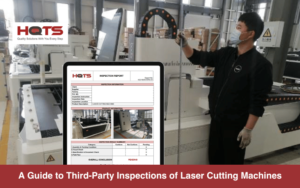Quality inspections and valve testing are extremely important when it comes to the smooth running of fluid systems. Industrial valves are an integral part of many industrial machines and even the tiniest malfunction can have a ripple effect on the rest of the machine. Therefore, it’s important to carry out the right checks to ensure safety and efficiency.
When it comes to testing valves, there are multiple valve testing procedures used and all of them need to conform to the strict acceptance criteria or performance standards. In this article, we’ll go through the key things you need to know about valve inspection procedures and tests.
What Are the Common Types of Valves?
Valves come in all different shapes and sizes depending on what industry or application they are being used for.
These are the most common types of valves:
- Butterfly Valve
- Gate Valve
- Globe Valve
- Gray Iron Valve Body
- Gray Iron Valve Cover
- Plug Valve
- Swing Check Valve
The Importance of Valve Testing
Valves need to conform to certain leakage standards and various other checks are also carried out. Valve testing and inspections should ideally be done every 12 months or so to ensure they are still in the best working condition. However, this will vary depending on the age of the valve, the condition of the valve, and what type of valve is in question.
How Do Valve Leakages Happen?
Valve leakages are a common phenomenon. They can happen for many different reasons. But there are two primary ways a leak can happen in a valve: fugitive emissions from a valve escaping into the atmosphere and leaks escaping through the valve but remaining contained within the piping system.
The first can naturally damage the environment and become a potential safety hazard to people. Valves are considered to be the major reasons for fugitive emissions being lost so quality management and testing of valves are important.
What Are the Common Causes of Valve Leakages?
Valve leakage is a common problem in most industries and it can be caused by a series of factors. But the most common causes of leakages in valves include a valve not being fully closed because the valve seat is being prevented from closing due to dirt, rust, or line debris; there being insufficient actuator travel, or the valve seat being damaged. There are naturally other factors that could cause leakages and testing will check for all of these potential issues.
What Are the Common Reasons for Leaks Into the Atmosphere?
The reasons for potential leaks into the atmosphere could include the gasket between the valve body and valve bonnet being damaged or the stem packing being out of place, worn, or damaged in some way.
What Is Valve Testing?
Valve testing is a process that is used to test and evaluate the health or condition of an operational valve. Naturally, there are many different types of tests and inspections that are performed on valves to ensure they are in the best condition and safe for use.
What Are the Valve Testing Procedures?
A typical testing procedure for a hydrostatic valve might involve the following stages:
- The body of the valve gets filled with testing fluid at a certain temperature.
- Pressure is applied for a certain length of time (usually for at least one minute).
- The leakage is measured across the element of interest of the valve such as the stem, seat, or closure mechanism, using physical instruments while being visually inspected.
- Finally, a valve should have a final visual inspection to check if it was damaged during the testing process.
What Are the Main Valve Leakage Tests?
Here is a list of the most common types of tests carried out to check for valve leakages and the types of valves associated with them:
Valve Seat Leakage Tests
The valve seat tests procedure involves placing a valve under pressure, then measuring the amount of leakage on the other side of the valve. The test pressures are often determined according to the American Society of Mechanical Engineers (ASME) B16.34.
Back Seat Tests
Valve backseat tests are commonly conducted on valves that have a backseat element, such as the gate and globe valve types. The back seat tests are performed according to the approved test procedure, but they often involve opening the valve while the packing gland is loose or not installed.
Valve Closure Tests
The closure test is a test that is typically conducted on valves that are used in full closed and full open service. These kinds of valves include, but are not limited to, stop valves, globe valves, plug valves, and ball valves.
Shell Leakage Tests
Valve Shell Leakage Test is a test that helps identify the presence of water and other fluids in the valve casing. The test is conducted by pressuring the valve for a specified amount of time, usually one minute or more, and looking for leaks. They are performed on valves like a check, stop, and isolation types.
The Types of Valve Testing Standards
Below is a breakdown of some of the most common valve testing standards:
- API 598: Valve Inspection and Test
- API 527: Seat Tightness of Pressure Relief Valves
- ASME B16.34: Valves – Flanged, Threaded, and Welding End
- ASME PTC 25: Pressure Relief Devices
- FCI 70-2: Control Valve Seat Leakage
- ISA-S75: Hydrostatic Testing of Control Valves
- ISO 5208: Industrial Valves, Pressure Testing of Valves
- MSS SP61: Hydrostatic Testing of Steel Valves
- MSS SP70: Cast Iron Gate Valves, Flanged, and Threaded Ends
- MSS SP71: Cast Iron Swing Check Valves, Flanged, and Threaded Ends
- MSS SP78: Cast Iron Plug Valves, Flanged, and Threaded End
- MSS SP80: Bronze Gate, Globe, Angle, and Check Valves
- MSS SP85: Cast Iron Globe and Angle Valves
All of the above documentation can be gained through a third-party quality management company such as HQTS. Our inspectors are ready to perform testing on your valves to ensure only the best products leave your factory which keeps your customers happy and the environment in a better state.
Conclusion: Valve Testing Procedures in Quality Control
The quality control procedure for valves is integral to the success of any manufacturing process. Valves are important in many fields – and even the smallest malfunction can have a detrimental effect on operations. The valve inspection procedure ensures that the valve is free of defects and will meet the defined quality standards
There is a range of valve testing procedures. At HQTS, we have over 25 years of experience in quality management, which includes quality assurance and quality control. We are a global company and can help with valve testing across many regions. Contact us if you want to book your valve test today!





